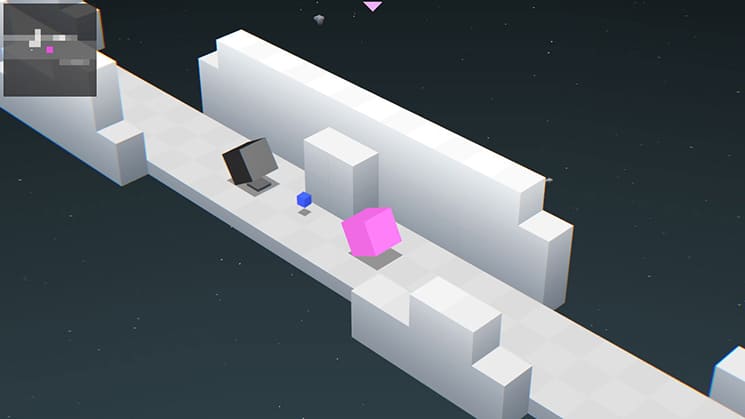You can trust VideoGamer. Our team of gaming experts spend hours testing and reviewing the latest games, to ensure you're reading the most comprehensive guide possible. Rest assured, all imagery and advice is unique and original. Check out how we test and review games here
As a central character the cube is somewhat underrepresented on Apple’s touch gaming wonder. Whilst the circle and the sphere can call upon any number of App Store ambassadors, the lowly cube finds itself set aside in place of other more interesting geometric shapes more suited to the iPhone hardware. The cube’s diminishing status hasn’t, however, stopped developer Mobigame from bringing it back off the bench with Edge; a game that not only wants you to play as a cube but also to think like a cube as well.
The first thing to know about Edge is that although billed as a puzzler, it’s actually more in the realms of isometric 3D platformer. There is the odd smattering of puzzle elements, but the crux of the gameplay is about speedily and effectively navigating your glowing neon cube towards a finish point. Controls of the cube are handled by rolling it over any one of its 12 edges to facilitate basic movement, climbing and balancing – with an emphasis on the latter as you progress through the later stages.
With a game that relies on such a simplistic foundation there needs to be something that really stands out and in the case of Edge it’s the wonderfully inventive level design. Although built using the same basic block formula, each and every level is truly individual, surreptitiously referencing other genres in their execution. Throughout the course of the 43 levels you’ll find yourself negotiating blockular highways (complete with speeding block vehicles), railway stations, giant block built robots and countless other more abstract themes.
The high quality level design perhaps emboldens the feeling that there isn’t really a huge amount of progression in Edge. By the fourth or fifth level you’ll have learnt the basic techniques for orientating your cube around obstacles and from then on it’s really a case going with what you know. Any new element introduced is preceded by a little question mark that when rolled over will tell you exactly what you need to do. Having your hand held somewhat diminishes the feeling of accomplishment that is so evident in the early stages and whilst avoidable it would have been nice to see some challenges that forced player involvement just that little bit further.
Edge is perhaps one of those rare games that you come back to not for the enjoyment of play but to remember the intricacy of design. There are times when Mobigame could have thrown a few curve balls in the form of more challenging puzzles, but for the most part Edge is a thoroughly fulfilling experience.
Edge
- Platform(s): Android, iOS, Linux, macOS, Nintendo 3DS, PC, PlayStation 3, PSP, Wii U
- Genre(s): Action, Adventure, Arcade, Casual, Indie, Puzzle







